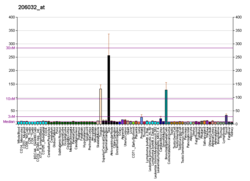Hereditary hypotrichosis
A consanguineous Afghan family in which 3 sisters, 12 to 18 years of age, and their 5-year-old brother displayed features of hereditary hypotrichosis, associated with vesicles on the scalp and skin. [9] At birth, scalp hair was present, and after ritual shaving at 1 week of age, scalp hair grew back; however, the hair was fragile and began falling out at 2 to 3 months of age, eventually leaving only sparse hair on the scalp. Vesicles that were less than 1 cm in diameter were observed on the scalp and skin of most of the body, occasionally disappearing but then reappearing; intermittently, the vesicles would burst with a release of fluid, leaving scars on the site that took 3 to 4 months to heal. There were no mucosal vesicles. Upon examination, the affected individuals were nearly devoid of eyebrows, eyelashes, axillary hair, and body hair. Teeth, nails, palms, soles, sweating, and hearing were normal, as was electrocardiography. Serum IgA, IgE, and IgD were measured in 1 individual and showed no change compared to controls. The parents were clinically unaffected. A scalp biopsy of the 18-year-old sister showed slight follicular plugging, mild perivascular and periadnexal inflammatory cell presence, and normal hair follicles. The sebaceous glands appeared morphologically normal and connected to the hair follicles. [9]
Mapping
Genotyping and linkage analysis of the consanguineous Afghan family resulted in a maximum 2-point load score of 2.68 (theta = 0.0) at markers D18S36 and D18S547. Multipoint analysis generated a maximum load score of 3.30 at marker D18S877. Recombination events defined an 8.30-cM critical interval on chromosome 18q12.1, flanked by markers D18S66 and D18S1139, containing 30 genes. [9]
Molecular genetics
A nonsense mutation in the DSC3 gene (600271.0001) mapping to chromosome 18q12.1 was identified in the consanguineous Afghan family with hypotrichosis and recurrent skin vesicles (613102). The unaffected parents and 3 healthy siblings were heterozygous for the mutation, which was not found in 100 unrelated ethnically matched controls. [9] In affected members of this family with hypotrichosis were homozygous for a 2129T-G transversion in exon 14 of the DSC3 gene, resulting in a leu710-to-ter (L710X; Ayub et al. 2009) substitution at the junction of the transmembrane and the C-terminal cytoplasmic domain, predicted to cause premature termination and nonsense mediated decay of the mRNA or instability of the truncated protein. The unaffected parents and 3 healthy siblings were heterozygous for the mutation, which was not found in 100 unrelated ethnically matched controls. [9]





